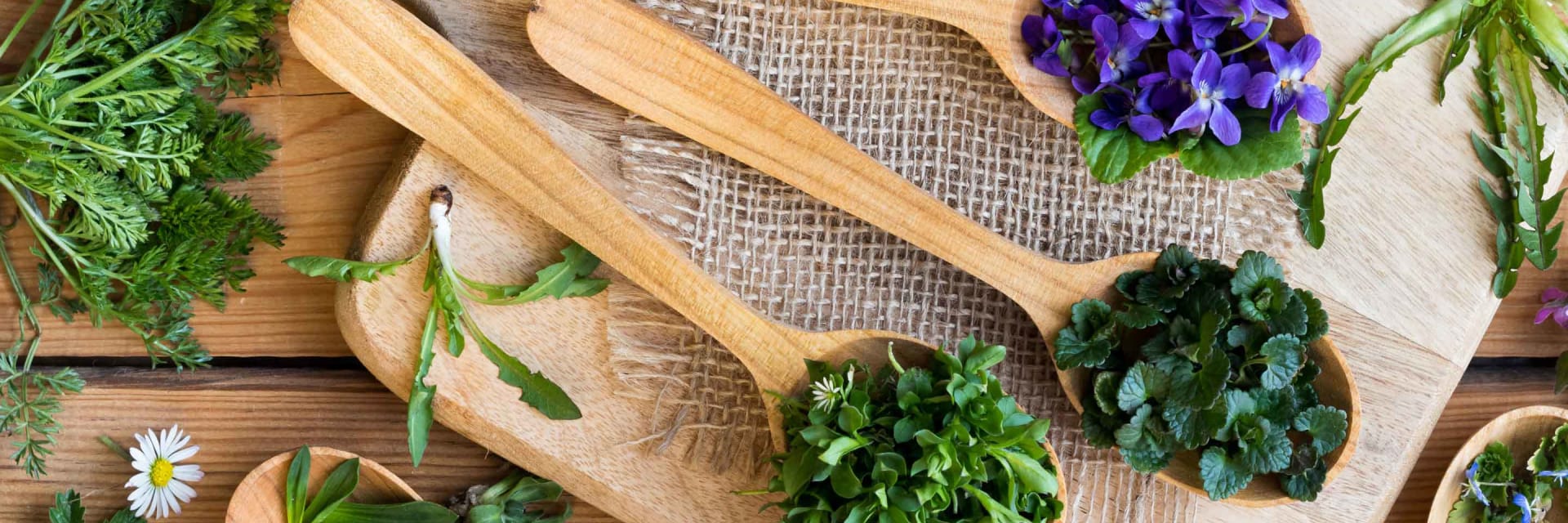Frequent search terms

- COMPO
- Guide
- Inspiration
- From the garden to the table
- Edible flowers: Colourful variety in cooking
Edible flowers: Colourful variety in cooking
Rose, nasturtium or pansy – many of the colourful flowers in our gardens not only look great, they are also edible and can add a decorative touch to dishes such as salads or dessert creations. In this article, we show you which of the edible delights also enhance flavour and how you can enchant your guests at the next garden party.
Table of content

The healthy climbing plant
Nasturtium
The vibrant orange-yellow nasturtium flowers are one of the best-known edible flowers, as they add variety and colour to the dish with their aromatic to slightly spicy flavour and are also extremely healthy. The climbing plant can mainly be grown in gardens and on balconies. Depending on the weather, nasturtium flowers blossom between June and October, and they should be freshly picked before being prepared as they wilt quickly.
The large vibrant flowers make an exquisite addition to a salad, but they also go very well on bread or with soups, herbal quark and herb butter.
Less is more when it comes to nasturtium
When using nasturtium, you should take care to not add too much as the spicy aroma of the flowers does not complement all dishes and can quickly dominate the flavour.

A sweet eye-catcher
Pansies
We are mainly used to seeing sweet-tasting pansy flowers in the display windows of pastry shops, as the colourful flowers are often used as natural decoration for cupcakes and wedding cakes. The perennial plant, which propagates by self-seeding in unusual places including between paving stones and on gravel surfaces, is particularly undemanding in gardens. It is best to pick the flowers fresh from the plant before eating them as they are quick to wilt and lose their aroma.
Besides decorating cakes, the flowers can also be put on home-made biscuits using a little egg yolk. Pansies are used in salads to create hearty combinations or simply to decorate the edge of dishes. Dried pansies are also used in tea or herbal blends.
To candy the flowers, place them in beaten egg white – this will preserve them for a few days – and then dust them with a little granulated or icing sugar. Following that, leave the candied flowers for a few hours to dry.

More than just decoration
Scented roses
Roses often come ready to use in salt and pepper products, herbal mixtures or as a raw product in dried form for consumption. If you wish to use rose petals in your cooking, keep in mind that not all types of rose are edible. Peonies, Christmas roses and hollyhocks belong to a completely different plant genus and can even be poisonous. However, all wild and garden roses are edible. If you find that too vague, you can look into the gourmet Rosella rose, this genus was specifically cultivated for consumption and can be kept in a pot on the windowsill or in window boxes.
The rose petals also make a beautiful addition to drinks: Combined with a French wine-based aperitif, in lemonades or as a syrup. A wintry variety is the classic rose petal tea, known for its remarkably intense aroma.
Making even mineral water irresistible
If you would like to offer your guests something special at the next garden party, the edible petals can also be frozen in the form of ice cubes to spruce up drinks.

A piece of childhood from the meadow
Wild meadow flowers
And if you don't have a garden or a balcony, there's no need to go without fresh flowers in your cooking – you can also eat some wildflowers. Most people probably put daisies in their mouth at some point in their childhood and were surprised to find that the flower heads almost taste like carrots. The flowers are a particularly popular ingredient in raw vegetable salads, and they are also delicious in herbal quark, on buttered bread or lightly toasted in oil.
Dandelion is another edible meadow flower. It has an aromatic and herby flavour and is mainly sold as a tea to help alleviate stomach and intestinal problems. What's more, the yellow flowers can be boiled down to make dandelion honey or turned into jelly and syrup. Like many other garden herbs, dandelion is also suitable for salads, herb sauces and butter.


